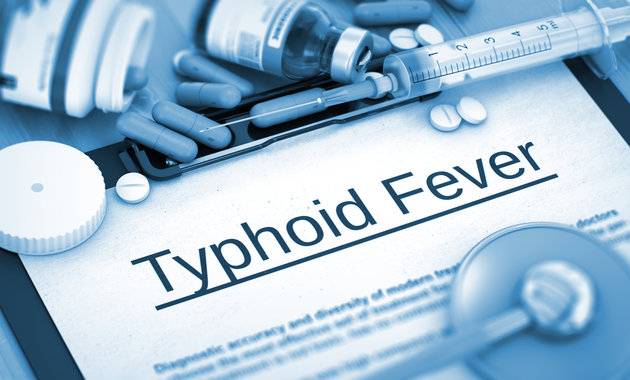
Typhoid is an infection typically characterized by fever. It is an acute form of illness that can become life-threatening if left untreated. Salmonella Typhi Bacteria is the bacteria that causes Typhoid and is treated through antibiotics. The former variant of the bacteria causes a more severe ailment.
You can come in contact with the bacteria through the following means:-
– Consumption of water or any form of food contaminated by S Typhi bacteria.
– People who have become carriers of the bacteria post typhoid fever can contaminate the water supply chain through their stools and eventually let the water enter food crops.
– Touching your mouth with unwashed hands.
Coming in contact with someone suffering from Typhoid since the disease is easily transmittable.
Symptoms
It is only after a week or two of being infected by the bacteria that your body starts to show symptoms of Typhoid.
The symptoms of the disease are as follows:
– Fever: You will have a mild fever initially. However, gradually it increases to 104 degrees within days. It gets worse when left untreated.
– Aches: As the fever persists, you will have severe headaches. Excruciating pain in the stomach could also be a symptom of typhoid fever. Additionally, you may also feel pain in other body parts and muscles.
– Fatigue: You might experience extreme tiredness irrespective of the amount of work you do. You might experience lethargy of varying degrees.
– Problems in the digestive system: Since the bacteria infect the intestines severely, your digestive system experiences disruptions. As a result, you may either experience constipation or diarrhoea. Constipation is difficulty in excretion, while diarrhoea is characterized by loss of watery and loose stool thrice or more in one day.
– Sweating accompanied by dry cough are other early symptoms of Typhoid fever.
If the disease is not treated properly, the severity of symptoms may increase. As a result, you might develop some other additional symptoms like:-
– Weight loss: You will lose your appetite, or it may become poor. As a result, it is natural to experience loss of body weight.
– Rash: You may spot rashes between the belly and the chest that are red in colour.
– Stomach: Other than experiencing pain, the stomach can become bloated or swollen, making the pain even worse.
In the later stages, one risks the development of the following symptoms:-
– Neuropsychiatric conditions: Typhoid fever can have manifestations such as delirium, a confounding state where one experiences disorientation and restlessness. Meningismus and facial twitching can also accompany encephalomyelitis. Catatonia can occur in severe cases alongside brain ulcers.
– Respiratory conditions such as pneumo typhoid, a type of pneumonic situation, can befall along with ulceration of the posterior region of the pharynx.
– Complications in the intestine: The intestine can incur damages like intestinal haemorrhage, i.e., internal bleeding of the gastrointestinal tract. Additionally, perforations within the intestine can manifest as a result of Typhoid fever.
– Acute abdominal pain can be a sign of Typhoid too.
Rare symptoms
There are several other rare symptoms of Typhoid, which occur in severe cases. These are:
– Neural problems: Frank Meningismus, transverse, myelitis or polyneuropathy, focal intracranial infections, spastic paraplegia, schizophrenia like illness, depression, etc.
– Pericarditis and peripheral vascular collapse.
– Blockage in the urinal path is very uncommon but occurs in the presence of coliform. The condition is called Typhoid cystitis.
– Zenker’s degeneration in the abdominal or thigh regions.
– Polymyositis
– Arthritis in ankle, knee, or hip bones.
This is in no way an exhaustive list of symptoms. However, hopefully after reading this, you got a fair insight into the complications typhoid can cause when untreated. A patient can recover in 7-10 days, depending on the severity. However, untreated Typhoid fever can take more than a month to recover. The chances of it relapsing are even more.
Diagnosis with Typhoid Test
The Bacteria called S Typhi enters the small intestine first through the consumption of contaminated food. From here, it temporarily enters the bloodstream only to be carried into the liver, spleen, and bone marrow to aggregate. Here on, they remerge in the bloodstream to give rise to initial symptoms.
Consequently, the gall bladder and the biliary system, along with the lymphatic tissues, are invaded by S Typhi. They rapidly multiply in numbers and travel into the intestines, and manifest in stools.
Such manifestations make it possible to diagnose Typhoid through various forms of Typhoid Tests, including culture tests of blood, bone marrow tissues, pee, or poo. Other forms of Typhoid tests include:-
– CBC test: A complete blood count test is carried out to observe the number of white blood cells. A high concentration of white blood cells is indicative of Typhoid fever.
– Platelet count: A reduction in platelets indicates the presence of the bacteria.
– ELISA: This is a blood test carried out to check the presence of S Typhi antibodies in the subject.
It is rare to implement bone-marrow testing since it is a painful and highly invasive method. It is only when other Typhoid tests fail to provide a concrete diagnosis that a bone marrow test, also the most accurate test known, is conducted. According to the part of manifestation, antibiotic medicines are then prescribed.
